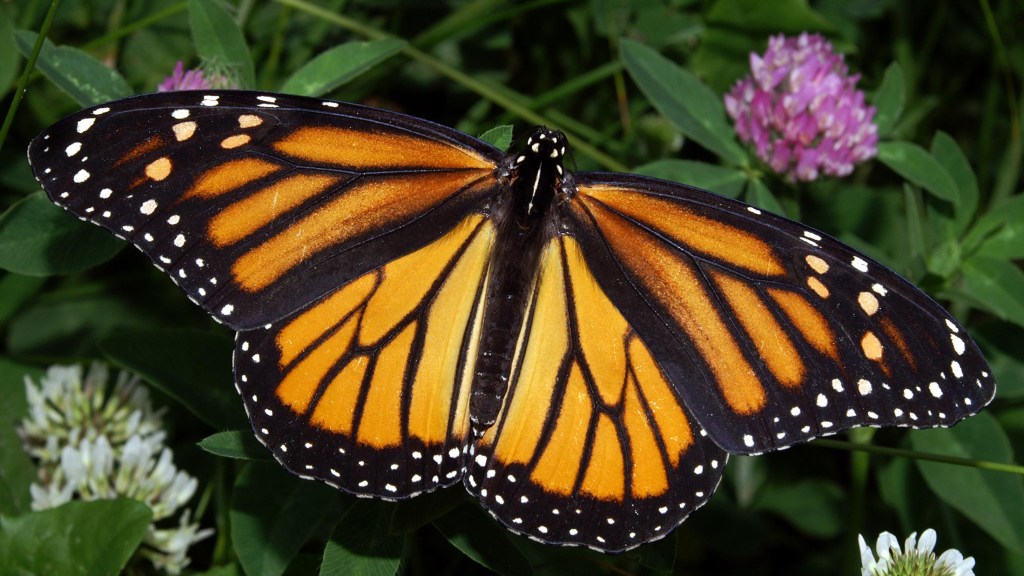For the past month, monarch butterflies have caused a lot of buzz in both the news and in conservation circles. The reason: a report published by the World Wildlife Fund and others that documented a 59 percent decline in monarch populations this year.
This week, Yale Environment 360 published perhaps the best piece yet on this alarming decline, Richard Conniff’s interview with Chip Taylor of Monarch Watch. It presents a number of interesting issues that conservationists should notice.
It’s well known that almost the entire eastern population of monarch butterflies overwinters in a few clustered forests in Mexico. These tiny islands of habitat make the butterflies vulnerable. Many U.S. residents believe that the population decline is, in fact, due to logging in Mexican forests. But as Taylor points out, the Mexican government has done an excellent job stopping illegal logging.
So why the decline?
The study’s authors point to agricultural fields. Taylor suggests that the monarch butterfly is likely “collateral damage” from the use of genetically engineered crops, namely Roundup-ready corn and soybeans. These crops have resulted in significantly higher pesticide use, wiping out the milkweeds that monarchs need to survive.
As Taylor says in the interview:
Now you are really hard pressed to find any corn or soybeans that have milkweed in the fields. I haven’t seen any for years now because of the use of Roundup after they planted these crops. They have effectively eliminated milkweed from almost all of the habitat that monarchs used to use.
Additionally, due to biofuel and high crop prices, there are more acres in corn and soybean production than any year since just after World War II. This has meant that a lot of land has been taken out of the Conservation Reserve Program (CRP) and a lot of marginal land–where milkweeds once grew– has been tilled.
That’s a lot of lost habitat for wildlife, including monarch butterflies.
And here’s where you come in.
Taylor’s Monarch Watch is urging people to plant milkweeds as part of their backyard gardens this spring.
Milkweed isn’t going to grow back on agricultural monocultures. Conniff questions whether backyard gardening can really help, but there are a lot of backyards and vacant lots that could hold milkweeds.
As Taylor says: “To assure a future for monarchs, conservation and restoration of milkweeds has to become a national priority.”
And it would appear that similar citizen-led restoration efforts have helped other species: Consider the nesting boxes that have dramatically helped eastern bluebirds and wood ducks, conservation efforts led by birding clubs, youth groups and backyard enthusiasts. A similar effort in planting milkweed could create a lot of butterfly habitat.
Monarch Watch offers milkweed growing tips to get you started, and has information on other citizen-science projects that can help butterflies.
And, please: lay off those those pesticides. Using alternatives for your weed and pest issues not only helps butterflies, it’s better for kids and pets, too.
Monarch butterflies are one of the most charismatic and beloved species in the country. It’s time for all of us to do our part to make sure they remain a common sight in our yards, gardens and parks.
Photo credit: Kenneth Dwain Harrelson under the the Creative Commons Attribution-Share Alike 3.0 Unported, 2.5 Generic, 2.0 Generic and 1.0 Generic license.




When we moved to Spotsylvania 30 years ago, we decided that we did not want to mow our five acres ( two years later we added another five) and let them grow into a meadow, cut once a year, in Fall. We have always had a lot of butterflies, and in the last two years, I have watched a few monarchs at the flowers around the house. They come so close to me as I work that I could touch them ( but do not). Our meadow has always had wild milkweed in it.
What’s known regarding the use of the bacillus used for gypsy moth control? Does it affect all butterflies and moths including monarchs?
Hi Jim and Patricia, Thank you for the question! According to the WA Department of Agriculture: “Only the caterpillars of moths and butterflies that are feeding at the same time as the gypsy moth caterpillar (and thus at the time when Btk will be applied) will be impacted. However, these moths and butterflies will quickly repopulate the area from outside the treatment zone – usually within a couple of years. Remember, too, that without treatment, gypsy moth caterpillars will quickly ravage the vegetation that these native moths and butterflies depend on. This would force the native moths and butterflies permanently out of the area, besides the other ecological impacts from the defoliation.” Learn more: https://agr.wa.gov/plantsinsects/insectpests/gypsymoth/btk/btkqa.aspx#Question%2010:%20What%20about%20other%20moths%20and%20butterflies%20What%20about%20the%20monarch%20butterfly
Things readers should know:
I recently found out that citizens should plant ONLY, and I do mean ONLY, milkweed that is native to their immediate area, and generally not within 10 miles of an overwintering site, per, I recall, the Xerces Society (www.xerces.org).str
I am 1/4 mile from a California eucalyptus forest that is a Monarch preserve, so gave my potted indigenous narrow-leaf and pine-leaf milkweed to a friend who is farther away.
I destroyed the tropical milkweed (non-native) that was gifted to me – site carries a parasite that prevents the Monarch from fully developing and they die.
It also disturbs the migratory cycle by placing the wrong plant at the wrong place on the route, confusing the butterfly.
Unfortunately the local nurseries here in Santa Barbara continue to sell it, complete with a monarch sticker on the pot, because it is “pretty”.
The lesson: find out what to plant in YOUR area from your local botanic garden, or the Xerces Society.